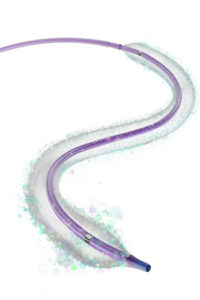
Medtronic reinforced the durability, consistency, and safety of the IN.PACT Admiral drug-coated balloon in patients with peripheral arterial disease with new data presented in a series of late-breaking clinical trial presentations at the Vascular Interventional Advances (VIVA) Annual Conference 2016 (18–22 September, Las Vegas, USA). These included three-year results from the pivotal IN.PACT SFA trial and one-year, real-world results from the full clinical cohort of the IN.PACT Global study.
IN.PACT SFA Trial
The three-year outcomes from the IN.PACT SFA trial were presented today by Prakash Krishnan, assistant professor of medicine and director of endovascular intervention, Mount Sinai Heart, New York, USA. The results demonstrated the sustained, long-term clinical benefits of IN.PACT Admiral drug-coated balloon compared to plain balloon angioplasty. “The IN.PACT Admiral is the only drug-coated balloon to-date with superior performance supported by three-year data,” said Krishnan. “In line with the one- and two-year data, we saw a consistently low clinically-driven target lesion revascularisation rate and high patency rate. These durable, long-term outcomes reinforce the shift we are seeing in adoption of IN.PACT Admiral drug-coated balloon as the primary treatment option for superficial femoral artery treatment.” The IN.PACT SFA trial enrolled 331 patients at 57 sites across Europe and the United States who were randomised to treatment with either the IN.PACT Admiral drug-coated balloon or plain balloon angioplasty (percutaneous transluminal angioplasty). The data demonstrate strong durability through three years with superior performance in both primary patency (69.5% compared to 45.1% percent in the angioplasty group [p<0.001]) and clinically-driven target lesion revascularisation (15.2% compared to 31.1% in the angioplasty group [p=0.002]). Additionally, of the patients who received a repeat procedure within three years, those in the IN.PACT Admiral group did not require a second procedure as soon as those in the angioplasty group (542.9 days for IN.PACT Admiral on average vs. 302.9 days for angioplasty, p<0.001). The data also continue to demonstrate the long-term safety benefits of the IN.PACT Admiral, with no major target limb amputations in the IN.PACT Admiral DCB group.
IN.PACT Global study
In a separate session, Michael R Jaff, medical director, Mass General Vascular Center, Massachusetts General Hospital and professor of medicine at Harvard Medical School, Boston, USA, presented new one-year results from the full clinical cohort of the IN.PACT Global study. The results continue to underscore the consistent performance in both safety and efficacy for the IN.PACT Admiral.
The IN.PACT Global Study has enrolled over 1,500 patients across 27 countries, including the 1,406 patients in the full clinical cohort presented today, to characterise the performance of IN.PACT Admiral in treating real-world patients with challenging and complex lesions. The study included external monitoring and adjudication of events by an independent clinical events committee. Additionally, it included core lab evaluations for pre-specified imaging subsets for subjects with long lesions (≥15 cm) (n=157), chronic total occlusions (≥ 5 cm) (n=126) and in-stent restenosis lesions (n=131), as recently presented at international conferences.
“Despite the complexity of these challenging lesions and patients, the outcomes were consistent across all patients, including the imaging subsets,” said Jaff. “Complex lesion types, including long lesions, chronic total occlusions and in-stent restenosis, remain challenging to treat with no clearly superior treatment options. These results demonstrate the effectiveness of the IN.PACT Admiral drug-coated balloon as a primary therapy in treating these challenging patients who we routinely see in clinical practice.” The one-year data demonstrated a low clinically-driven target lesion revascularisation rate of 7.5% in a population with a mean lesion length of 12.09cm, 18% in-stent restenosis lesions, and 35.5% in occluded lesions. Additional safety and efficacy outcomes also included low rates of thrombosis (2.9%), occurrences of major target limb amputation (0.2%), and clinically-driven target vessel revascularisation (8.1%) within one year.
In a press release Medtronic noted that IN.PACT Admiral is the only drug-coated balloon to have published two year data from a pivotal randomised trial and also the first to have presented three-year data.










